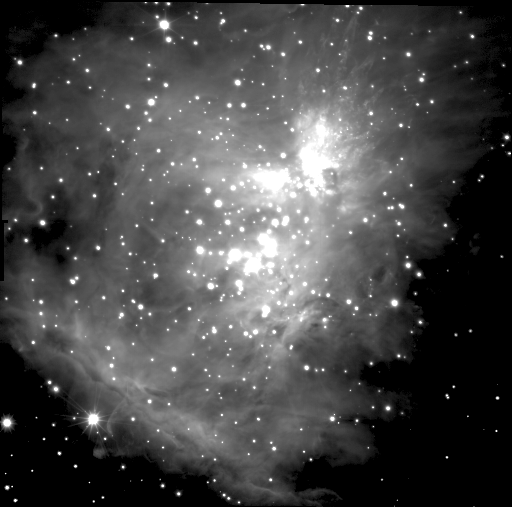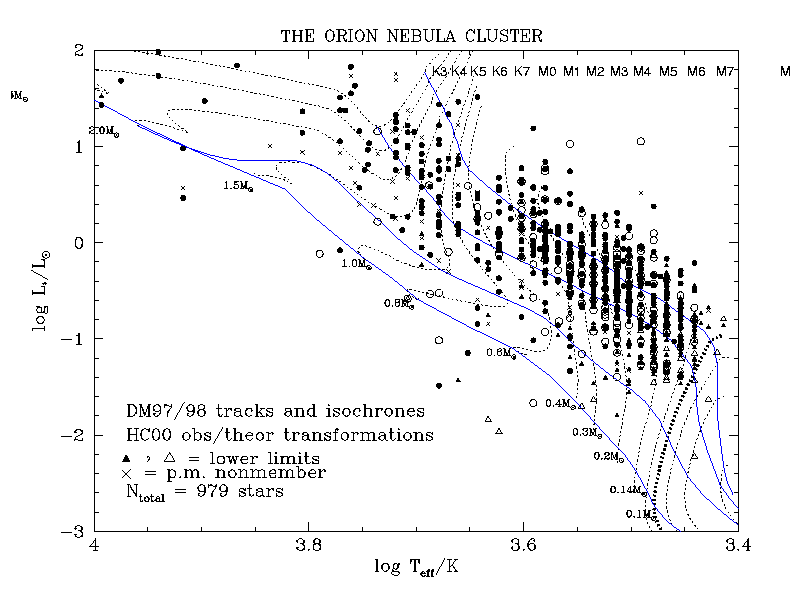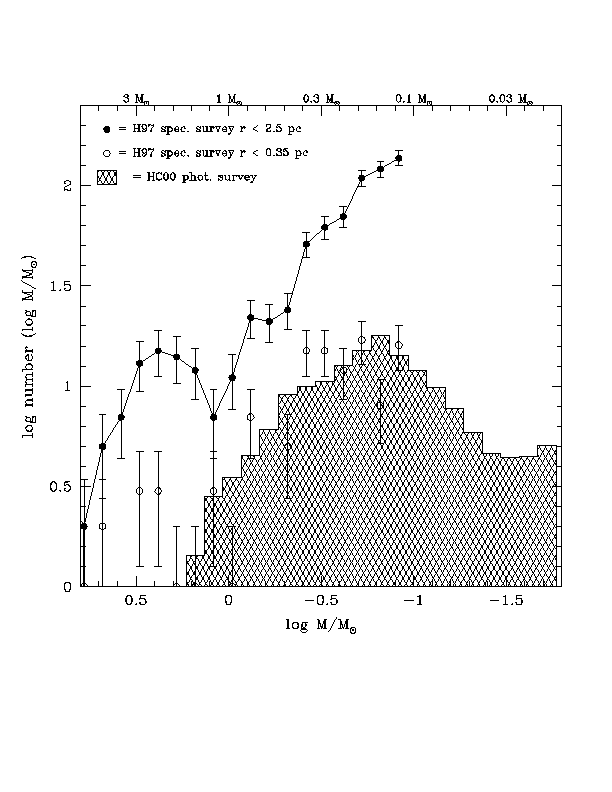



(IMF updated as of 11/99)
I have worked on an analysis of the stellar population and star-forming history of the Orion Nebula Cluster (ONC), located in the Ori OBIc/d region of the Orion Molecular Cloud Complex. The ONC harbors the namesake Trapezium stars, and is *the* densest of nearby star-forming regions by a factor of 3-10. Despite its scientific and popular fame (they've even made a movie!) , the stellar population of the ONC remains largely unexplored, due in large part to the strength and extreme spatial variability of the optical nebulosity. Past work included a synthesis of near-infrared photometry, optical photometry, and optical spectroscopy for several thousand stars located within about 2.5pc of the Trapezium stars. More recently we have worked on deeper near-infrared photometry in the inner 5.1 x 5.1 arcmin^2 of the cluster and pushed our mass function measurements down to 0.02 Msun. Interestingly, this has led us to a revision of the mass function results presented earlier (see above .gif) and this URL for details.
A related study has been of the infrared variability exhibited by stars located within the spatial boundaries of these previous stellar population studies and extending out to 0.8 x 6 degrees^2. Those results have be found here.
I have collected (stolen??) the following set of images on the region:
And here is some science (or at least how things appeared in my 1997,1998 series of papers on the ONC):
 now updated
now updated
 for new theoretical models (D'Antona/Mazzitelli), new transformations
between theoretical and observational quantities, and new data which
extend our measurements down to 0.02 Msun. This will be published
in Hillenbrand & Carpenter (2000).
Here is a three-panel comparison of results along the way.
for new theoretical models (D'Antona/Mazzitelli), new transformations
between theoretical and observational quantities, and new data which
extend our measurements down to 0.02 Msun. This will be published
in Hillenbrand & Carpenter (2000).
Here is a three-panel comparison of results along the way.
See my publications page for some ONC-related papers including the data tables.